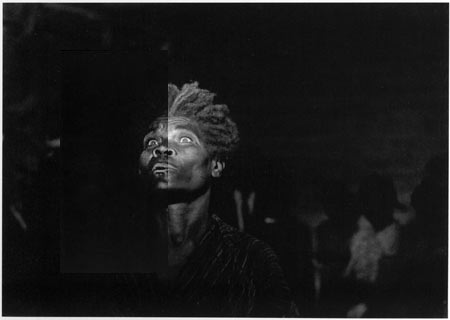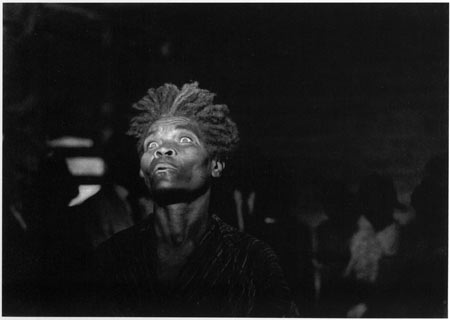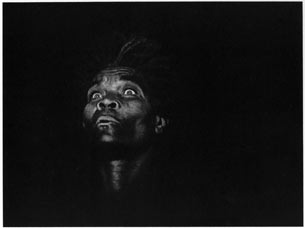W. Eugene Smith’s Madness 1959

W. Eugene Smith was one of the greatest photojournalists of the 20th Century, but I think he would probably have a hard time if he was still alive and decided to enter World Press Photo, which just decreed that only “retouching which conforms to currently accepted standards in the industry is allowed.”
I had actually been thinking about this particular photo for a while (its title is “Madness, 1959”, and it was taken during the photographer’s trip to Haiti). The above is a composite I made, but it’s easier to see what I’m after when you look at the two images separately. The first one was published in W. Eugene Smith Photographs 1934-1975 (my apologies for the somewhat non-ideal scan):
 The second one is from Let Truth Be the Prejudice: W. Eugene Smith, His Life and Photographs
The second one is from Let Truth Be the Prejudice: W. Eugene Smith, His Life and Photographs:
 As you can see, even from these non-ideal scans, the two images are products of the same negative, yet they’re very different. The first is (probably - I have not seen the neg) uncropped, whereas the second one is cropped.
As you can see, even from these non-ideal scans, the two images are products of the same negative, yet they’re very different. The first is (probably - I have not seen the neg) uncropped, whereas the second one is cropped.
If you are familiar with the photo, you have probably seen the second version, where there are no details whatsoever in the background. This version is obviously way more dramatic.
So is the second photo a “photo illustration”, because it’s cropped and - especially - because all the people in the background are made to disappear? Would World Press Photo demand to see the negative (how would they know that the neg has people in the background?), and how would they then decide whether or not Smith conformed to “currently accepted standards in the industry”?
Of course, World Press Photo do have a point, but I don’t think the answer is as simple as talking about undefined “currently accepted standards in the industry”.
The situation is much more complicated than that, and I think it needs to be seen in the context of the credibility problem of media as a whole. It is not so much a problem of photography itself as a problem of the environment photography is embedded in.
I’m planning to expand on this in a future post.